- Recent Updates
- Colpoy's Bay
- Colpoy's Bay Introduction
- Spragge's Hill
- The Kalbfleisch House
- The Kalbfleisch Dock
- The Kalbfleisch Marina
- Whicher's Sawmill
- The Wrecks Near Whicher's Mill
- Frame's Falls and John Wood's Grist Mill
- Albemarle Street
- Hughenden and Whicher's Store
- The Community Hall
- The Forest Home Hotel
- The Colpoy's Bay Schoolhouse
- The Colpoy's Bay Church
- Edgehill Cemetery
- Colpoy's Bay From the Air
- A Glimpse of the Past
- Wiarton
- Berford Street
- Berford St. Part 2
- Berford St. Part 3
- Wiarton Harbour
- Bluewater Beach
- Caframo Ltd. and Wiarton Cement Works
- Wiarton Beet Sugar Factory
- Wiarton's Hotels
- Wiarton's Schools
- Wiarton's Banks
- Grand Trunk Railway Station
- The Wiarton Fish House
- The Wiarton Fish Hatchery
- Wiarton's Berford Theatre
- The Wiarton Woolen Mills
- Wiarton's Furniture Industry
- Wiarton's Hospital
- Wiarton's War Memorial
- Wiarton's Town Hall
- Wiarton's Newspapers
- Wiarton's Grist & Flour Mills
- Wiarton's Sawmill Industry
- Wiarton's Gateway
- Connecting Passages
(Links) - Present-day Map
of Colpoy's Bay - Colpoy's Bay
Lot Map (1870) 
Wiarton Timeline- Present-day Map
of Wiarton - Bibliography
- About the Author
- Site Map
(use if menu doesn't work) - Tell me your impressions!
Wiarton's Furniture Industry
No industry better charactarizes the core of Wiarton's history than furniture making. Drawing equally on the plentiful supply of timber from the Bruce Peninsula and the rapid production of lumber from the nearby sawmills, the furniture business was, in fact, the first large manufacturing operation in Wiarton. Through all the ups and downs of Wiarton's economic growth, furniture production remained at its heart for the next 80 years.
The Wiarton Furniture Factory
Only 13 years after the first log cabin was cut out of the woods to settle the future town of Wiarton, the village saw the modest birth of an era in 1879 when E.F.R. Zoellner opened a small hand-made furniture operation in the second floor of his furniture store. (I have not yet found the former location of this store.) Two years later in 1881, Zoellner moved his operation to Berford Street in the new Ashcroft Block two-thirds of the way south between Division and William Street (I am unsure which side of the road it was on). Before long, he'd named his outfit the "Ontario Furniture Warerooms." Figure W16A shows two ads for Zoellner's firm in the Wiarton Echo newspaper.
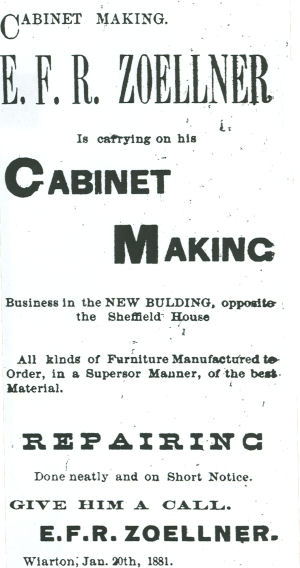
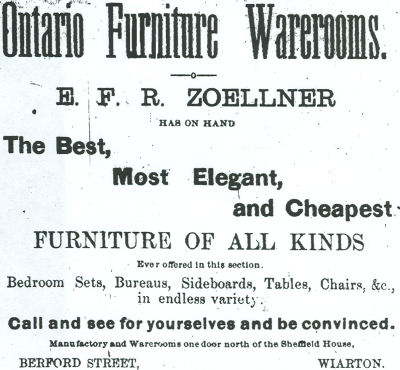
Figure W16A: Ads for E.F.R. Zoellner's furniture factory and retail store, later known as the Ontario Furniture Warerooms. (January 20, 1881, April 23, 1881)
The footprint of a future Wiarton landmark was made in 1881 when Adam Falk and W.E. Morlock of Tavistock created a partnership with Zoellner and purchased the southwest corner of Berford and Frank Streets. A solid 63x40 foot three storey brick structure was erected soon after, along with a stone 20'x39' engine room to the rear. The first floor of the factory held all the large equipment such as planers, circular saws and lathes. The second floor contained the light equipment, while the third floor held the finishing facilities. The whole operation was powered by an 80 horsepower boiler, a 30 horsepower engine and an 8 foot diameter driving wheel (all contained in the engine room). The total cost of the building and machinery was $5000 (at least $175 000 in today's money).
Changing the name of Zoellner's business slightly, Wiarton's new furniture factory began operations under the title "Ontario Furniture Factory" in September of 1882. Only two months later, E.R.F. Zoellner, its founder, retired from the business, selling his share of the partnership to S. Wegenast. Henceforth, the firm was advertised as the "Ontario Furniture Works" of Falk, Morlock and Wegenast. Figure W16B shows two ads for the Ontario Furniture Factory/Works before and after Zoellner's departure.
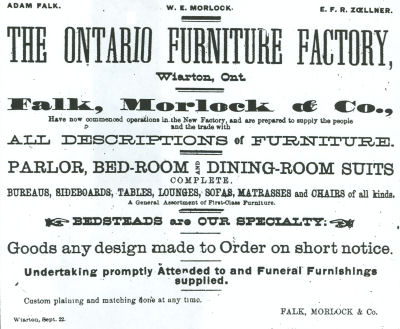
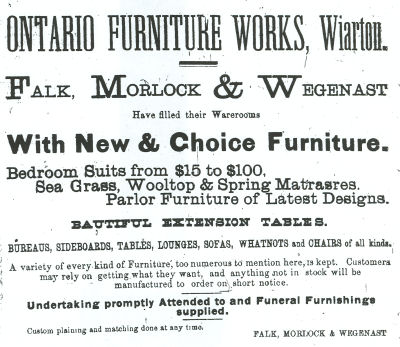
Figure W16B: Ads for the Wiarton Furniture Factory/Works. (September 22, 1882, November 22, 1882)
Operations at the factory reached full capacity with 40 employees in January of 1883, at which time a 35'x40' new kiln (oven) was built to the rear of the factory to dry the lumber used for the furniture. However, this success would be rather shortlived. In October of 1885, Falk, Morlock and Wegenast announced they were shutting down the factory and moving to Mount Forest, Ontario (where E.R.F. Zoellner had set up shop the previous fall) to start a new furniture factory. By the third week of July 1886, all the factory's machinery had been moved to the new firm in Mount Forest. Despite editorials in the Echo newspaper appealing to local capitalists to form a joint-stock company to take over the factory, time went on as the factory sat empty. In July of 1886, a portion of the factory was leased to James Miller for his undertaking business. Some other interesting options were also entertained, including use as a sash and door company or even a roller rink. However, it took nearly a year and a half, along with a reduced price, to sell the property. After negotiating a tax exemption (as was common in those days), the new firm of J.C. Siemon and C. Hill refit the Wiarton furniture factory and reopened it for operation in May of 1888, two and a half years after it was shut down. The previous fall, J.C. had come to Wiarton to build the Arlington hotel.
To complement their new factory, Siemon & Hill leased one of four stores in the new Miller block (on Berford Street between William & George Streets) in late August of 1888 to serve as a retail outlet for their products. Doing rapid business, the factory was expanded in April of 1889 and the showrooms were moved to the Robinson block (the future Town Hall at the corner southwest corner of Berford and George Streets). At that point the factory employed 35 people and specialized in bedroom suites, sideboards and tables. Figure W16C shows an advertisement from this period. It was taken from the debut issue of the Wiarton Encore newspaper (similar ads also ran in the Wiarton Echo) dated October 24, 1889.
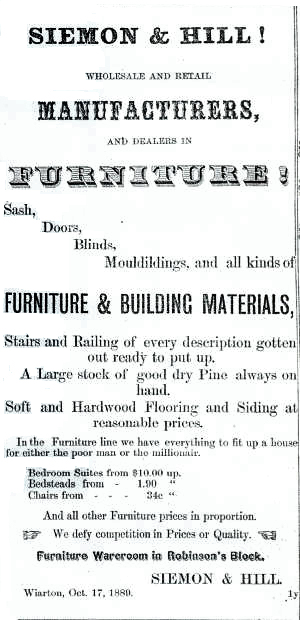
Figure W16C: Ad for Siemon & Hill Furniture Company (1889)
The retail store was moved once again in October of 1890 to a new building just south of the factory. Three months later, the retail business and undertaking services, which Siemon and Hill had also maintained, were sold to their former bookkeeper, J.L. Lindsay. Siemon & Hill focused their efforts solely on the factory's trade throughout North America and Europe. Lindsay moved his new business back to its former location in Robinson Hall. He operated it there until January of 1893 when he sold it to J.W. Perry who then ran the business for many years as the Art Furniture Store.
Still doing booming business, the furniture factory received a major expansion in the spring of 1892, when a new wing, about half the size of the original building, was added to the south end of the structure. Figure W16D provides a rare early view of the Siemon & Hill furniture factory less than a year after this addition had been added.
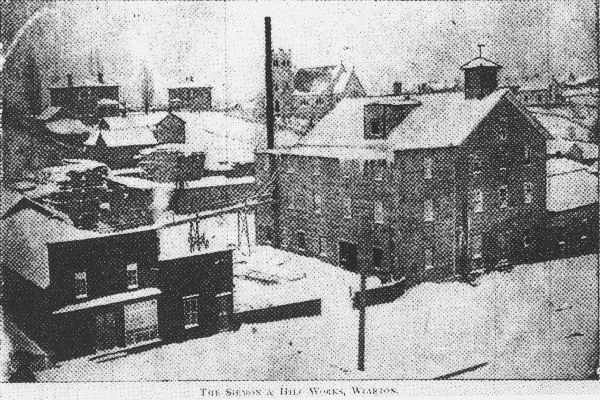
Figure W16D: Rare view of the Siemon & Hill factory (1893)
Siemon and Hill continued their operation of the factory until the second half of 1896 when Hill left to form the Hill Chair Company elsewhere in Wiarton (see more below). The furniture factory firm then became known as Siemon & Bros. Mfg. Co. (or Siemon Bros. for short), named after J.C. and his brothers Andrew and John. Figure W16E below gives a rather exaggerated engraving of the factory during this period. (The factory looks considerably larger in this image that it was in reality. Only the two wings at the left actually existed. Also, the bay is shown as a scenic backdrop, despite the fact that the factory was actually quite far away from it and the orientation is incorrect!)
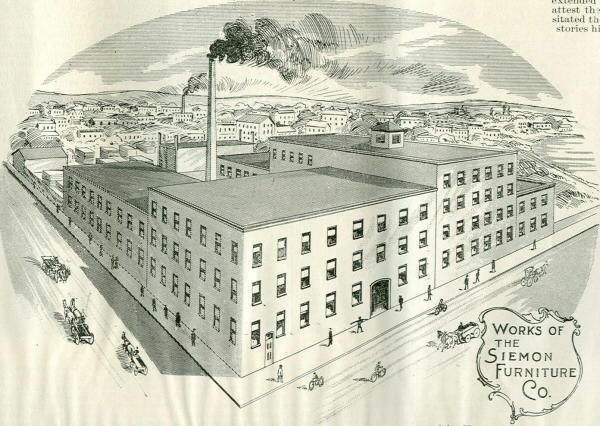
Figure W16E: Siemon Brothers Furniture Company (1899)
The factory was only officially known as Siemon Bros. for barely 6 years before the firm amalgamated with 19 other Ontario furniture companies to form the Canada Furniture Manufacturers Ltd. (CFM) at the beginning of 1901. (Nonetheless, the change was in name only, with the Siemon Bros. retaining control.) Only a few months later, the Siemon Bros. (under the Canada Furniture Manufacturers' banner) established a new factory in Wiarton to produce tables (see additional information below). Meanwhile, production continued steadily on at the original furniture factory until December of 1904 when it was announced that operations would be incorporated into the table factory. The original factory then sat idle for about a year until the Siemon's decided to use it as a flooring factory under the banner of a new firm, Siemon Bros. Ltd.
During this period of time, relations between the Canada Furniture Manufacturers and the town of Wiarton became somewhat strained. 1903 saw the beginning of a four year dispute between the company and the town over the supply of electricity. CFM had been providing Wiarton with all of its electricity through a steam-powered generator adjoining the company's table factory. Evidently, this operation was a losing proposition for CFM, and they tried persistently to sell the generating plant to the town, even going so far as to raise the price of electricity suddenly by 50% (obviously not a popular move with the citizens of Wiarton, leading many to cut back on their use of electric lights in favour of old-fashioned coal lamps). After years of wrangling, the town signed a contract in early June 1906 for Wiarton to receive its electricity from a new generator being built by a man named J.C. Thede at Sauble Falls. It took until August 8, 1907 for the new plant to be connected and the contract with CFM to end.
While all this was going on, Wiarton (and much of Canada) was in the midst of a significant economic recession. Eventually, this took its toll on the vital lumber industry, causing all of the town's furniture factories to close for months at a time. In desperation and still stinging from their massive losses in the Wiarton Beet Sugar Factory, the town council began legal action against CFM and Siemon Bros. in March of 1908, declaring breach of contract over a $15 000 loan made at the time of the construction of the table factory. According to the contract, CFM had to employ a total of 120 people for 10 months of the year. CFM denied the validity of the contract, which the lawyers agreed was not tightly written. The situation looked grave when it appeared that the CFM would have to close its Wiarton operations permanently (in the fall of 1908, only 3 of CFM's 16 Ontario factories were running). It took ten months of harsh negotiations to reach an out-of-court settlement in late January 1909. Under the new agreement, CFM was to pay two years of back taxes and interest and in the future, employ 100 men for 10 months of the year or otherwise pay a certain percentage of their current loan interest. By then, the demand for furniture had picked up sufficiently for CFM to resume production in its Wiarton factories.
Giving further evidence of a rebound in the economy, the Siemon Bros. began construction on a new, large purpose-built flooring factory along the eastern end of the Wiarton shoreline (see below for more information). When the new flooring factory opened in 1912, the Berford Street factory appears to have shut down until J.C. Siemon organized a new firm called the Canada Casket Company in 1914. It was at this time that the building was renovated and expanded to take on the look familiar to many Wiartonians - a rectangular building measuring 187 feet by 60 feet and four storeys in height. The building was illustrated in the company's promotional materials in 1914 (Figure W16F).
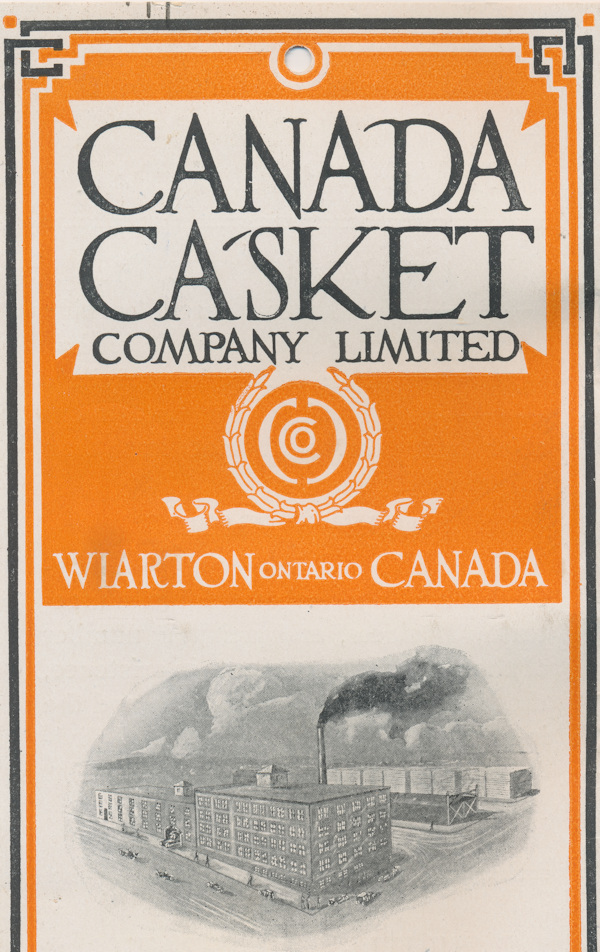
Figure W16F: Logo and illustration of the Canada Casket Company in promotional material from November 1914. (Source: My personal collection)
Employment was expected to be in the range of 100 to 125 people, but the Canada Casket Company was never a success, in part due to financing troubles (money markets were closed for new enterprises after the onset of World War One). In August of 1918 the casket company's mortgage was called in by the town who then gained control of the property in September of 1919.
Almost immediately afterward, it was announced that the factory would return to its original use: the general manufacture of furniture. A group of local townspeople organized a joint stock company simply titled the Wiarton Furniture Factory Co. with Christian Hill, (former manager of this factory as well as the chair factory) as manager and local sawmill owner Gideon Kastner as superintendent. The Wiarton Furniture Company ran successfully in this capacity throughout the Great Depression of the 1930s. The next decade, however, brought tougher financial times. A shipment of bad lumber, bought and paid for, broke the financial back of the factory, causing its sale to the Bone Brothers of Toronto in 1943. The factory continued to run, still known as the Wiarton Furniture Company although shutdowns became more frequent as demand fell. The business changed hands again when Modern Planned Kitchens, again of Toronto, bought the factory in 1955, but that firm quickly folded.
With the future looking grim and the building about to be razed, a new generation of local townspeople came to the rescue in 1957, putting up money to have a firm called the Plywood Association locate in the building the following year. The old factory had won an 11 year reprieve, but the end finally came in 1969 when production ceased for good...87 years after it had first begun. Figure W16G shows an aerial image of the factory in its final years (taken sometime in the mid to late 1960s).
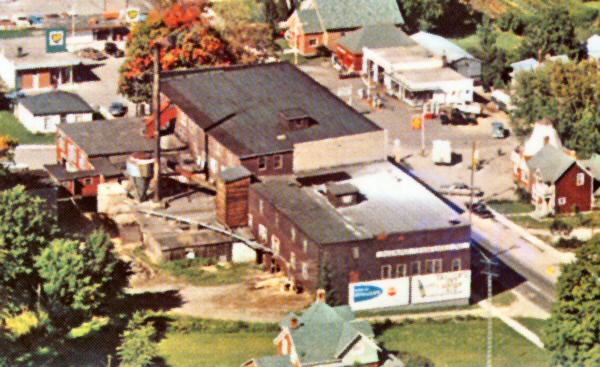
Figure W16G: An aerial view of the Wiarton Furniture Factory (mid to late-1960s).
The factory sat empty and in disrepair after it closed in 1969. In 1971, an elaborate arson attempt was foiled in which a crude timer was meant to set alight flammable materials placed deliberately throughout the building. In the end, the building was condemned the following year and razed to to the ground to make way for a new block of retirement apartments. Figure W16H presents two images, courtesy of the Wiarton Echo, of the Wiarton furniture factory being demolished. Brick by brick, the first and last vestige of Wiarton's furniture industry was erased.
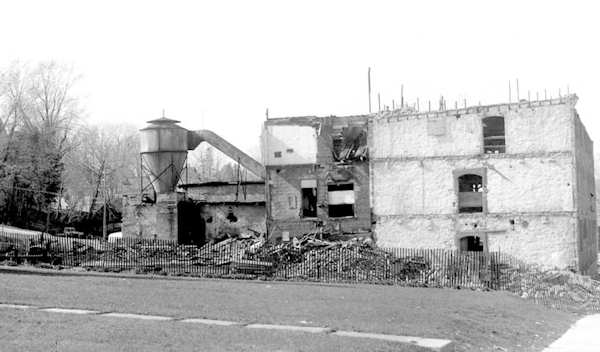
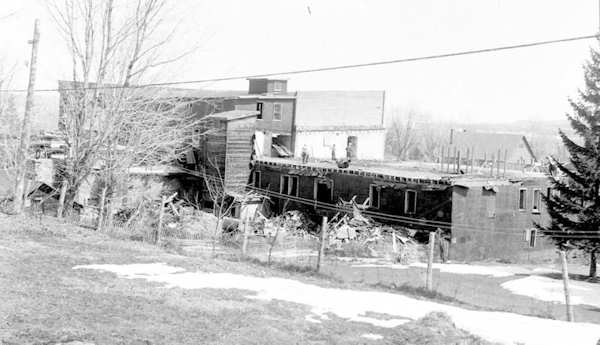
Figure W16H: Demolition of the Wiarton Furniture Factory. (1972, Souce: Wiarton Echo)
Figure W16I gives a view of the Wiarton Furniture Factory in its early 1900s heyday, along with more modern views of the site (2004 and 2023) now occupied by apartments. No trace of Wiarton's onetime mainstay industry remains.
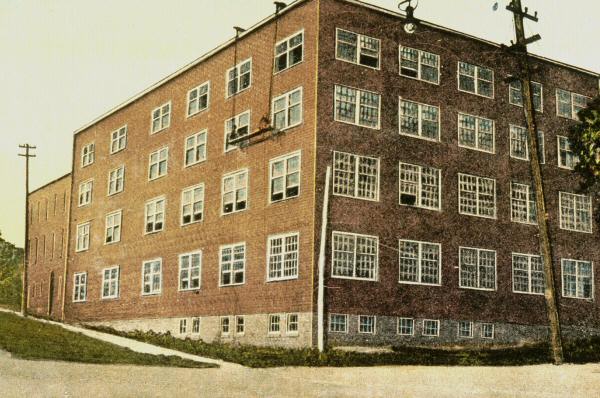
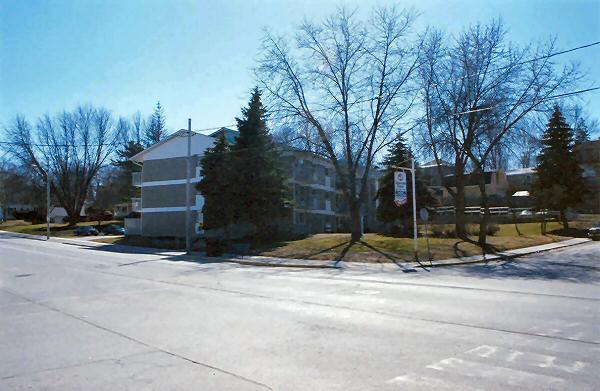
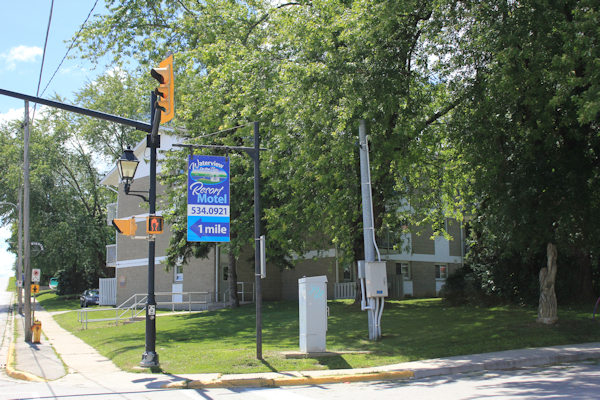
Figure W16I: Wiarton Furniture Factory and a similar view of the Hillside Apartments. (c. 1900s, 2004, 2023)
The Siemon Brothers Table Factory
With the Wiarton furniture factory running strong under their management, the Siemon Brothers floated the idea of erecting a new purpose-built table factory in 1900. Once they had secured a land grant, a 10-year partial tax exemption a $15 000 (over $350 000 in today's money) loan from the town council, the Siemon Bros. went ahead with construction of the table factory on the lots between Scott and Taylor Streets fronting George Street. (Today Wiarton's arena takes up most of this space.)
The table factory was a formidable group of structures with two large stone buildings of equal dimension (60'x150'x30', 3 stories high with 300 windows) twenty feet apart at its core. One of the two main buildings contained the machinery, while the other provided the finishing facilities, shipping and storage. The factory also featured a number of surrounding buildings, including an electrical generation plant that, as mentioned above, not only powered the lights in the factory, but all of Wiarton. In addition, the Siemon Bros. sawmill was conveniently located across George Street from the factory, giving easy access to an internal source of lumber.
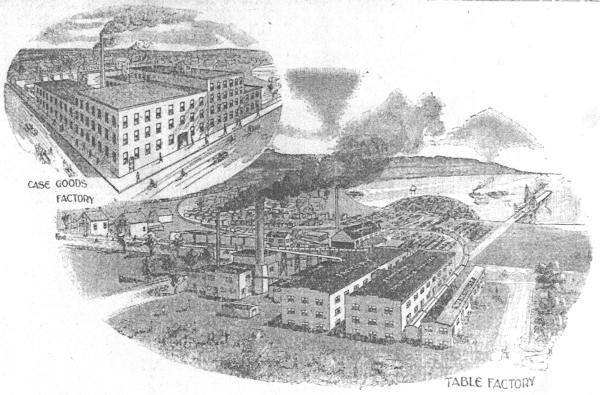
Figure W16J: The Siemon Brothers Table Factory (and the Wiarton furniture factory, inset). (1901)
Figure W16J shows the engraving of the factory published upon its opening on February 21. 1901. That day, 2000 people toured the new factory and some were treated to a dinner and ball that evening to celebrate the occasion.
The table factory ran under the Siemon Brothers name until it become part of the amalgamated Canadian Furniture Manufacturers (CFM) in 1901. In December 1904, it was decided that the furniture production at the Berford St. factory (also owned by CFM) would be combined with that of the table factory through a 3rd storey addition to each of the table factory's two main buildings. Aside from the difficulties mentioned above, the table factory ran successfully for another 12 years before it was destroyed by a tragic fire. Two days after Christmas 1916, flames were spotted in the factory. However, reaction to the fire seems to have been uncharicteristically lax. It was not long before it burned out of control. It must have been a chaotic sight that day, with employees escaping from second floor windows onto other factory buildings. Everyone escaped except one man who sadly died in the fire. Afterward, the factory was a total loss. Its remains were sold unceremoniously as junk for $75 000 (over $1.3 million in today's currency). Figure W16K shows a rare photo of the Wiarton Table Factory, taken as the buildings burned out.
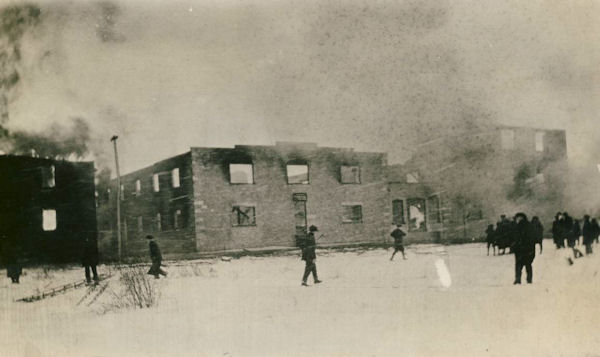
Figure W16K: Wiarton Table Factory burning down (1916, Source: Nancy Josland Dalsin)

(The Hill Chair Co. logo as it appeared over the doorway of the factory.)
The first chair company in Wiarton was a brief experiment of sorts. It was started by local capitalist B.B. Miller and a Mr. McIlvanie who decided to form a joint stock company in November of 1885. The two men chose the former Vulcan Foundry at the northeast corner of Berford Street and Division Street as the location for their new business. (The foundry had moved about 4 years previously to its longtime location at the southwest corner of William and Claude Streets, near the railyards.) The Wiarton Chair and Box Co. began operation in February of 1886, but after only a month of production, Mr. Miller decided to focus on his lumber affairs. He closed the chair factory down immediately.
Another local capitalist, John Ashcroft, bought Miller's factory that December, resumed production and subsequently rented out the operation to George Prairie in March of 1887. Production lasted until May of 1888 when a fire broke out in the factory's kiln. The fire consumed the entire factory, leaving Mr. Ashcroft with a $5000 loss (about $150 000 in today's currency). It would be another 8 years before Wiarton would see a new chair factory, and this time it was on a much larger scale.
When Christian Hill left the Wiarton furniture factory in 1896, he decided to set up a new operation specializing in the production of commode and rocking chairs. Located only a few blocks from the furniture factory, the Hill Chair Company stood on the northeast corner of the Greenlees property, near Brown Street on the south side of Mary Street next to the railway tracks. (The site is now occupied by houses, just northeast of the present hospital property). The factory was iron clad, 132 feet long by 45 feet wide, stood three stories tall and was lined with windows. Its basic layout was similar to that of the Wiarton furniture factory, with the major equipment on the first two floors and the finishing room on the top floor. The first chairs were produced in early August 1896. Less than two months later, the factory had a distribution network across Ontario.
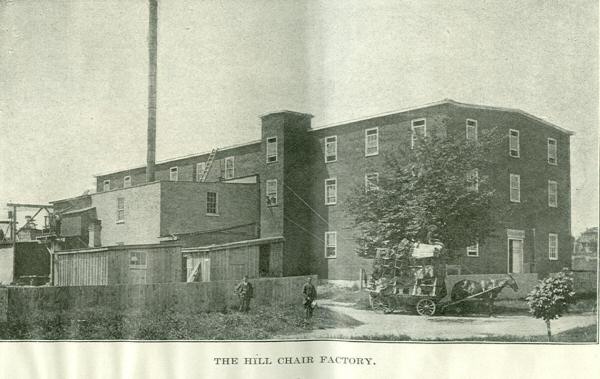
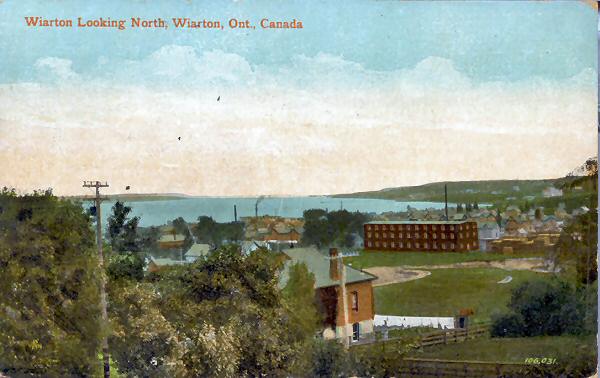
Figure W16L: The Hill Chair Company (1899, c. 1910)
Figure W16L above shows two images of the Hill Chair Co. The top photo shows the factory as it appeared in 1899. The bottom image comes from a postcard stamped by the post office in 1910. It shows the factory as it appeared from Berford Street near Greenlees Hill (which serves today as a popular tobogganing spot). Today the Wiarton hospital stands to the right of this picture.
The factory continued to produce chairs even after it became part of the amalgamated Canadian Furniture Manufacturers in 1901. Despite some slow periods, the chair factory ran rather successfully and even stood on the verge of a major expansion following the burning of the table factory in December 1916. However, the expansion never came and the story of Wiarton's chair factory drew to a close when it too burned down on the first of October 1919.
The Wiarton Flooring Factory
Emerging from the difficulties of economic recession, the Siemon Brothers began construction on the last monument to their Wiarton furniture production legacy, the Wiarton Flooring Factory, in October of 1908. The plans called for the one-storey main building to measure 416' x 80', with 2 nearby dry kilns standing 104' x 20' in dimension, plus an engine room, shavings vault, etc. The capacity of the plant was expected to be 40 000 board feet per day with 100 employees (about the same as the table factory and the chair factory combined). Upon its opening in 1912, the flooring operations at Wiarton's original Berford St. furniture factory were transferred to this new industrial outfit, erected on what was formerly the town's driving park, a shoreline lot at the northeast corner of Isaac and Frank Streets. Although the opening of the flooring factory was heralded as a significant step forward for the town's industry, the fortunes of the Siemon Bros. operation, would not last much longer.
World War One effectively closed-off access to flooring markets in England and Western Canada. As a result, demand for the Siemon Brothers' production dropped off dramatically during the war. (Some have also mentioned that anti-German sentiment (the Siemon family was of German ancestry) may have played a role in reduced demand for their products.) The flooring factory went bankrupt in 1918. Figure W16M shows the factory in the distance (top left, with sawmill at mid-ground and troops at training camp in foreground) three years after Siemon Bros. ceased operations. The building found new life, however, around 1923 when it was purchased as the new location for the Gilpin Planing Mill. (The planing mill's original location on the west side of Berford Street, about a quarter of the way north between Frank and George Streets, had burned down not long before that.)
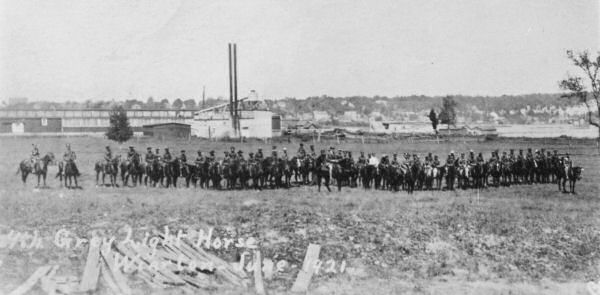
Figure W16M: Former Siemon Bros. Flooring Factory and future Gilpin Bros. Planing Mill in the distance (1921)
Gilpin's planing mill ran successfully at this location until fire broke out on March 12-13, 1933. Firemen had gotten the flames quickly under control that Sunday afternoon, but a flare-up the following night spread quickly through the main part of the factory. In the end, the production portion of the building (a 200 by 80 foot one-storey structure) was lost, while the storage room and office (100 by 80 feet, also one storey, attached at the south end of the factory by a fire wall) were saved. In Figure W16M, above, one can see the factory building with the production portion at right and the office/storage room at left. In 1933, the factory was employing about 25 people. Damage was estimated at $44 000 (about $800 000 in today's dollars), including all equipment and much of the stock. With insurance only covering $25 000 (about $450 000 in today's dollars), the impact on the firm was great, especially at the height of the Great Depression.
However, production eventually restarted in the remaining part of the building and continued until fire broke out once again in the morning hours of July 2, 1942. At that time, the building housed the Gilpin Planing mill, sash and door factory owned by Herbert Gilpin (two or three employees), and a furniture plant run by his brother Victor (15 to 20 employees). The fire spelled the end of the business started around 75 years previously, in the very early days of Wiarton, by their father Thomas Gilpin.
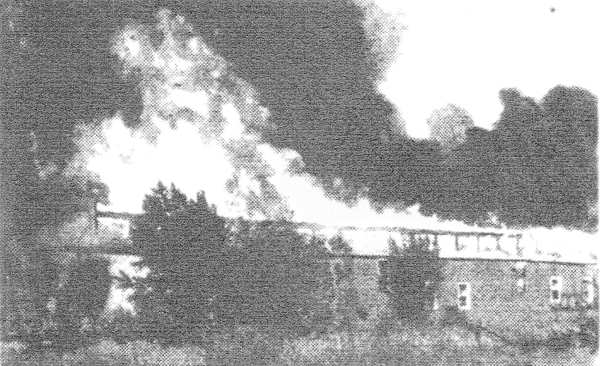
Figure W16N: Gilpin Bros. Planing Mill (former Siemon Bros. Flooring Factory) in the midst of burning down (July 2, 1942)
A Final Word... The year 1971 saw the last vestige of Wiarton's furniture industry disappear with the demolition of the former Wiarton furniture factory. Today, there are no buildings left to mark the place where these vital businesses once stood. Only words and images remain, like those on this page, to recall the early days of Wiarton and the furniture trade that once made up the town's industrial core and employed so many of the town's men.
The next time you see the Hillside Apartments, Wiarton's arena, or the hospital...think of the big furniture factories that once stood in their place.

